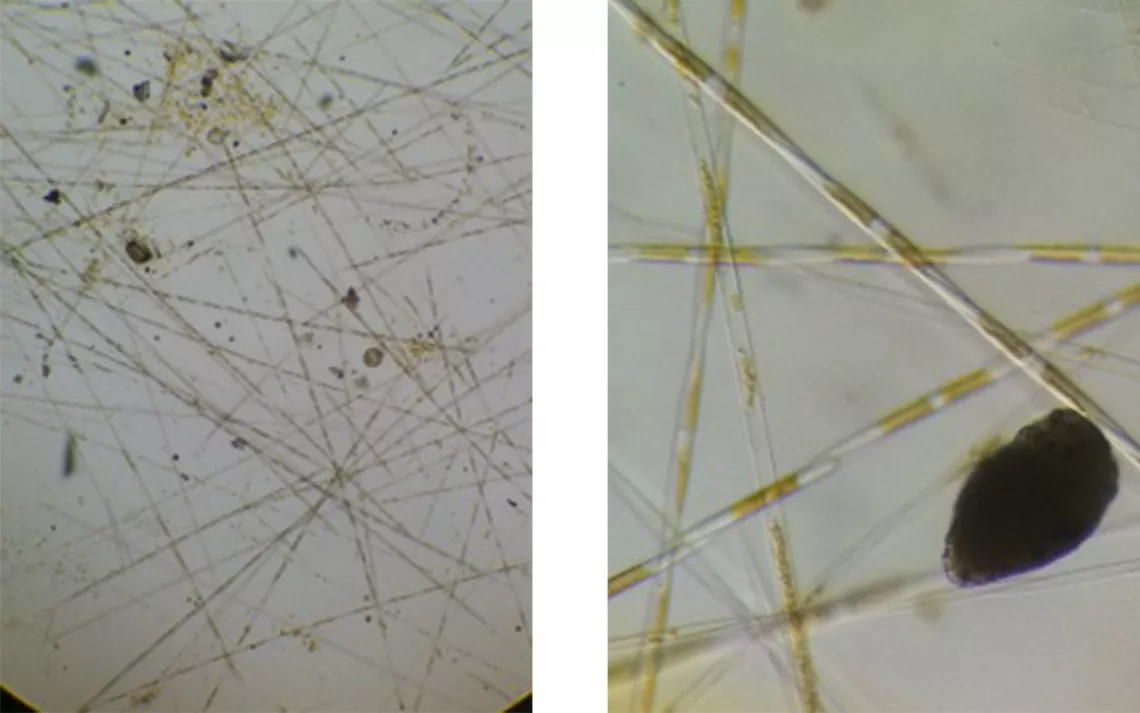Blooming Awful
Southern California has some of the highest levels of toxic algae ever recorded

In Alfred Hitchcock’s horror masterpiece “The Birds,” flocks of gulls and crows go ballistic and upend Bodega Bay. Hitchcock’s dive-bombing birds may not be entirely fictional; some scientists believeThe Birdsis inspired by a 1961 episode during which scores of shearwaters on the north shore of Monterey Bay began to act very strangely and bump into buildings. This is behavior that animals display after ingesting domoic acid, a neurotoxin released by some algae. Hollywood horror was sparked by a toxic algal bloom.
We may be seeing more horror-inspiring days in the future: An August study by researchers at University of Southern California finds that Southern California has some of the highest levels of domoic acid “ever recorded in the literature.” At its highest point, the domoic acid concentrations were more than five times higher than the level of concern for the toxin. These algal blooms are plain bad news: they kill shellfish, cause marine mammals to miscarry or seize, and contribute to human health problems.
While people can avoid contaminated seafood with the help of Department of Health warnings, animals aren’t so lucky. “Domoic acid has no properties that we know of that signal to [sea lions] that this is a contaminated fish,” said researcher Dr. Jayme Ann Smith, one of the authors of the study. “So they go about their day, and as marine mammals they have to eat 10 percent of their body weight every day. So during a bloom, they eat contaminated seafood, and they get this big dose.”
Recently, toxic algae blooms have gotten a great deal of attention in Florida, where a 10-month old “Red Tide” is killing fish and shellfish and making them dangerous to eat. According to the National Ocean Service, every coastal state has reported blooms. The new USC study shows that California has more than its fair share.
The USC study investigated the levels of toxic algae on the coast between Santa Barbara and the US-Mexico border between 2003 and 2017 and found extremely high levels of domoic acid. In 2011, domoic acid concentrations reached 50 micrograms per liter. The authors of the study described it as “some of the highest values of particulate domoic acid ever recorded from natural plankton communities.”
Besides killing fish and shellfish, toxic algal blooms can also impact larger animals and create ocean “dead zones.” Blooms can put humans at risk when the toxins in the algae aerosolize (as they do during Florida’s Red Tides). Children have been sent to the ER after visiting the Florida coast during blooms. Exposure to toxic algae can cause rashes, stomach problems, and even neurological impacts, according to the EPA. “It’s a quality of life issue,” said Sierra Club Red Tides Campaign director Cris Costello, who lives in Osprey, Florida. “People can’t bring their kids to the beach, they can’t do outside activities. When it’s really bad, I even feel it in my house.”
Dr. Smith believes human activities are likely increasing levels of toxic algae and the frequency of blooms. “It’s hard to pinpoint, but I would say that it is probably exacerbated by human activity,” Dr. Smith said. “There’s a lot of difficulty in this problem. For example, In California wastewater is discharged into the ocean and it has been that way for a very long time, and there are not necessarily measurements prior to that,” she said.
Costello believes nutrient loading from pollutants like manure and synthetic fertilizer is part of the problem. “The bottom line is, like any organism, they need food. If they don’t have food, they won’t survive,” Costello said. “Red tide cells may be ‘naturally occurring’ and may travel from elsewhere in the gulf, but when they get to our coast they feed off of land-based nutrient pollution carried by rainwater.”
Climate change could be a contributing factor. “It’s like a soup,” Costello said. “You need the right ingredients, and warm water is one of those ingredients.” Warmer water is likely to increase blooms in many parts of the United States, according to the EPA. During drought periods levels of domoic acid went down in Southern California, but Dr. Smith isn’t convinced this means climate change will take care of algal problems in the region. “This is ecology, where animals take advantage of niches. It might reduce domoic acid, but something else will rise to take its place.”
Dr. Smith says more research needs to be done to fully understand the problem. “We need to figure out if the nutrient loading is exacerbating the problem, and if it is, take action, and if it’s not, figure out what is exacerbating the issue,” she said. Dr. Smith also hopes that as research advances, it will be possible for scientists to plan for blooms before they occur. “Another really important step is that the more we understand this problem, we can start to make predictive models such as what we have for hurricanes and weather. We need to be doing more research to get a better understanding of the physics and the chemistry and all the nutrient cycling in the region and how that relates to bloom development.”
Sometimes reality is scarier than fiction; at least Hitchcock’s birds stayed on the silver screen.
 The Magazine of The Sierra Club
The Magazine of The Sierra Club



